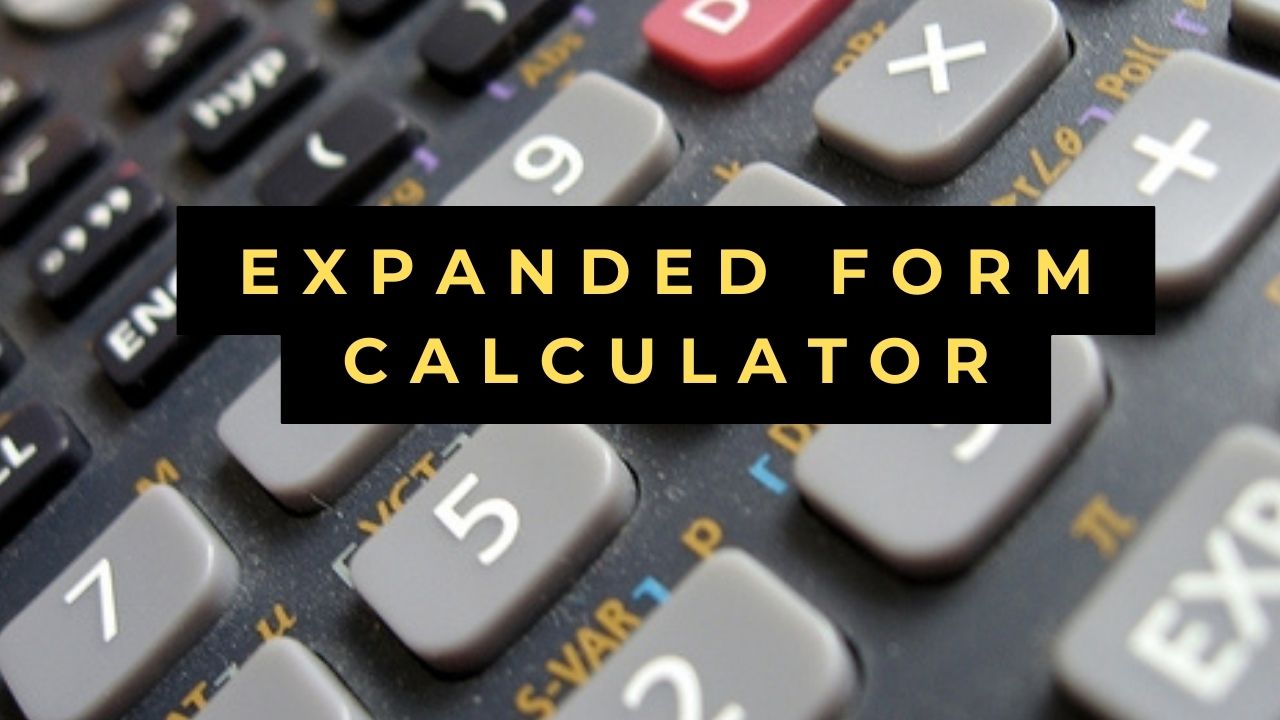Expanded Form Calculator
- Estimate The Difference Calculator
- Equivalent Ratio Calculator
- Equivalent Expressions Calculator
- Equation Of A Line From Two Points Calculator
Expanded Form Calculator with Steps
Easily express numbers in expanded form using the Expanded Form Calculator. Learn how to input numbers, interpret results, and address common queries regarding expanded form notation. Simplify your calculations today!
Table of Contents
Expanded Form Calculator
Welcome to our Expanded Form Calculator guide. Expanded form is a way of writing numbers as the sum of each digit multiplied by its place value. In this article, we'll explore how to use the Expanded Form Calculator to express numbers in expanded form, understand its significance, and address common questions to enhance your understanding.
Expanded Form Calculator Overview
Understanding Expanded Form
Expanded form represents a number as the sum of its constituent digits multiplied by their respective place values. For example, the number 4567 in expanded form is expressed as 4000+500+60+74000+500+60+7.
Importance of Expanded Form
Expanded form is important for several reasons:
- Understanding Number Structure: Helps break down numbers into their component parts.
- Place Value Concept: Reinforces the concept of place value and positional notation.
- Mathematical Operations: Facilitates addition and subtraction by breaking numbers into manageable parts.
How the Expanded Form Calculator Works
Our Expanded Form Calculator provides a user-friendly interface for expressing numbers in expanded form. You can input the number, and the calculator will decompose it into its constituent parts.
Step-by-Step Guide to Using the Calculator
- Enter Number: Input the number into the calculator.
- Calculate: Click on the calculate button to express the number in expanded form.
- Interpret Results: Review the expanded form representation provided by the calculator.
Practical Applications
Expanded form has practical applications in various fields:
- Education: Teaching place value and number decomposition in elementary mathematics.
- Finance: Understanding large numbers in financial statements and transactions.
- Programming: Manipulating numerical data in computer programming languages.
Advantages of Using the Expanded Form Calculator
- Accuracy: Provides accurate representation of numbers in expanded form.
- Efficiency: Offers a quick and efficient method for expressing numbers.
- Education: Helps reinforce concepts of place value and number composition.
FAQs
Q: Can the Expanded Form Calculator handle decimal numbers?
A: Yes, the calculator can express decimal numbers in expanded form by decomposing the digits before and after the decimal point separately.
Q: What if my number has leading zeros?
A: The calculator will ignore leading zeros and express the number in expanded form starting from the first nonzero digit.
Q: Is there a limit to the size of numbers that the calculator can handle?
A: While the calculator can handle large numbers, extremely large numbers may be displayed in scientific notation.
Q: Can the Expanded Form Calculator handle negative numbers?
A: Yes, the calculator can express negative numbers in expanded form by decomposing the absolute value of the number and adding a negative sign.
Q: Are there any restrictions on the types of numbers that can be expressed in expanded form?
A: Expanded form can be applied to any real number, including integers, fractions, and decimals.
Conclusion
In conclusion, the Expanded Form Calculator is a valuable tool for expressing numbers in expanded form and understanding their composition. By following the steps outlined in this guide and utilizing the calculator's features, you can simplify your calculations and gain insight into the structure of numbers.

